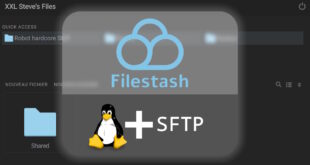KVM VPS can have additional performance by applying a few tweaks.
These tweaks are only required when you do a manual installation. All OS templates have these tweaks build in, so no action is required.
Important tweaks for all Operating Systems:
- Use the correct disk alignment.
We use modern 4K sector drives in all our SATA and SSD VPS nodes. When your partition layout is based on the old MBR 512b sector style, you can loose up to 25 times! of disk I/O performance. That’s a huge difference and will result a slow VPS, but also extra I/O load on our VPS nodes.If you partition layout is based on the 4K sector size, your first partition should start at sectory 2048 (or any other value that you can divide by 8).Modern OSes will take care of this alignment, but CentOS 5 and FreeBSD OSes are known for using a wrong disk alignment – so make sure you partition manually.More interesting information regarding this can be found on the link below:
Partition Alignment - For Linux OSes with the VirtIO disk driver:echo 0 > /sys/block/vda/queue/rotational
echo 0 > /sys/block/vda/queue/rq_affinity
echo noop > /sys/block/vda/queue/scheduler
echo “echo 0 > /sys/block/vda/queue/rotational” >> /etc/rc.local
echo “echo 0 > /sys/block/vda/queue/rq_affinity” >> /etc/rc.local
echo “echo noop > /sys/block/vda/queue/scheduler” >> /etc/rc.local
echo ‘vm.swappiness = 5’ >> /etc/sysctl.conf
echo ‘vm.vfs_cache_pressure = 50’ >> /etc/sysctl.conf - On VPSes with 1GB+ memory, you can consider to set the value “vm.swappiness” to 0 instead of 5.
This will lower the swap usage, and thus increases the performance of your VPS.For increasing sequential read I/O rates, you can add the following to your “/etc/rc.local” file before the “exit 0” line:
blockdev –setra 1024 /dev/vd*
Note; Do no set the value above too high, since that can have negative effect on the overall performance of your VPS
Reboot your VPS afterwards to apply all changes that you’ve made.








